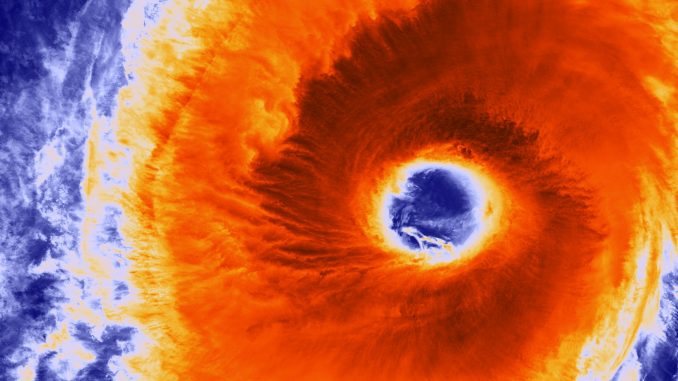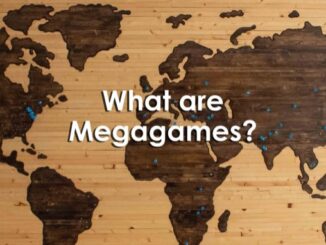
Water stress, searing heat, refugees, displacement, geopolitical uncertainty. In talking to innovative colleagues in the serious games space in The Hague this past week, the wargaming of the future is complex, and multidimensional—and climate change is certainly an underlying stressor.
I’m a Co-Director of a small company in the Disaster Management and Humanitarian Assistance space. My firm recently helped to design and execute a series of simulations for a local government in Sub-Saharan Africa to help refine local emergency management capabilities. There were no sophisticated computer-based audio-visuals. There were no LCD screens, and certainly no Virtual Reality headsets. In fact we didn’t even have dice or board games—our mechanics were only playing cards, flip charts, paper and Excel.
But we did something quite unique. Instead of a standard flooding scenario, we modeled something not seen in the area in at least 70 years…maybe ever. A catastrophic cyclone—a worst in the history of the southern hemisphere-type cyclone—bringing cataclysmic devastation, winds, rain, and storm surge. The meteorologists in the room agreed—it could happen in the climate-catalyzed threat environment of the future. Our simulation was intended break business processes apart, and the thinking behind “putting Humpty Dumpty back together again” strengthened Emergency Plans and Standard Operating Procedures.
It was an honor to be part of the process. But going forward it’s not enough to model climate in such a simple manner.
Our climate-catalyzed scenario was elementary. It merely extended a storm track zone in the Indian Ocean several hundred kilometers to the North. In essence, we dialed up the level of destruction in our baseline scenario and injects with an imaginary edit to the meteorological map of the era we just left—the Holocene.
In fact, we now live in a volatile new era, called the Anthropocene. An era driven by C02 increase levels and methane levels not seen since….the dawn of in human history…since our primate ancestor Australopithecus was around…since the only 9 million years after an asteroid killed the dinosaurs….recent news stories provide a large array of “not since XX in Earth history” analogues!
It seems as climatology and paleoclimatology rapidly advance, our current plight of the Anthropocene—our very future–is ironically mirroring a deeper and deeper look backwards into geologic time. And here, in the newest cutting-edge science, and in the space of climatology and anthropology, we find a potential Brave New World of rich scenarios to draw from. In fact, we must draw from them.
During the Paleocene-Eocene Thermal Maximum (PETM) some 56 million years ago, the Earth warmed at an astonishing rate—perhaps 13 degrees in a time span ranging from decades to 5,000 years or so. It was a warmer world to begin with, but in a blink of geologic time, crocodiles and palm trees spread north into the Arctic, the mid-latitudes were sultry and lush forests, and the area around the equator may have been largely uninhabitable. In fact, our primate ancestors may have been born in the lush Arctic rainforests of Greenland, Canada, and Siberia. The rate of rise in C02 and methane loads hasn’t been seen since that time.
While we now live in a warm period between Ice Ages, our Anthropocene plight can draw on quite a few PETM-inspired scenarios. We can imagine the tropics, Southeast Asia, Latin America, Africa, and the Middle East so searing that there is a catastrophic mass migration to the north. We can also imagine a rapidly-created ice-free Arctic, with jet streams that are irregular, or even non-existent. The PETM-inspired analogue for humanitarian simulations is a relevant, yet bleak one.
There are other episodes in Earth history worth noting. During the more recent Eemian Period about 127,000 years ago, which had similar carbon load to our current Anthropocene atmosphere, and sea levels were about 6 to 9 meters higher than today. The Eemian-inspired analogues for humanitarian simulations foretell catastrophic Sea Level Rise around the globe, swamping cities from New York to Dar es Salaam, triggering mass migration in South Asia, and extinguishing nation-states throughout Oceania.
As paleoclimatology advances, we are learning so much more about deep Earth history. This ranges from erratic and dramatic warming and cooling episodes (years to decades) as the Earth sputtered into and out of Ice Ages, to the time it may have rained nonstop on Earth (after the Permian Period 252 million years ago)…for 2 million years.
Not all of these are perfect analogues for the climate-catalyzed Anthropocene simulations. The continents are now in different locations, biomes are vastly different, and things have changed quite a bit over billions of years of evolution.

Yet what is also a key development to is the increasing granularity being published in the climatology space. For example, certain hotspots in the Arctic for sea ice melt may trigger very specific changes in El Nino episodes. That type of climatological driver can inform a specific scenario where pockets of Arctic “blue ocean” are exacerbating a dangerous El Nino season—and driving catastrophic on-the-ground fires in Australia or flooding in Houston, Texas USA.
Another potential granularity is the very specific “locking pattern” the Anthropocene jet stream can become stuck in, leading to exacerbated periods of droughts and floods. Think of the severe droughts and impact on wheat yields in Russia and China that preceded the food price shock which, in turn, was an underpinning of the Arab Spring movement of 2012. A jet stream locking-based scenario could drive complex humanitarian gameplay encompassing all of Eurasia.
In the end, there is a role in the wargaming and decision support community for the disaster management, humanitarian, and civil protection space. Within this space, there is a niche for climate change-catalyzed scenarios. And for those scenarios, aligning with the most exciting new developments in climatology and paleoclimatology can inspire serious gameplay with circumstances we have only begun to imagine.
In the end, there is a role in the wargaming and decision support community for the disaster management, humanitarian, and civil protection space. Within this space, there is a niche for climate change-catalyzed scenarios. And for those scenarios, aligning with the most exciting new developments in climatology and paleoclimatology can inspire serious gameplay with circumstances we have only begun to imagine. Serious game designers will greatly benefit from partnering with experts in the climatology and paleoclimatology fields and curating these dynamic climate landscapes into the canvas of today’s humanitarian scenarios.





Nick and Tiffany have you ever run across the early work in your area by Cathy Greenblat and Richard Duke in the early 1970s?
+++++++++++++++++++++++++++++++++
Greenblat, C. S. (1973). Teaching with simulation games: A review of claims
and evidence. Teaching Sociology, 1(1), 62–83.
Greenblat, C. S., & Duke, R. D. (Eds.). (1981). Principles and Practices of
Gaming-Simulation. New York: SAGE Publications, Inc.
Duke, R. D. (1974). Gaming: The Future’s Language. New York: Sage
Publications, Inc.
Duke, R. D., & Greenblat, C. (1975). Gaming Simulation: Rationale, Design
and Applications. A Text with Parallel Readings for Social Scientists, Educators and Community Workers. New York: Wiley & Sons.
Thanks for the additional reading, Michael. I’ve got a massive pile of new reading to do this month.